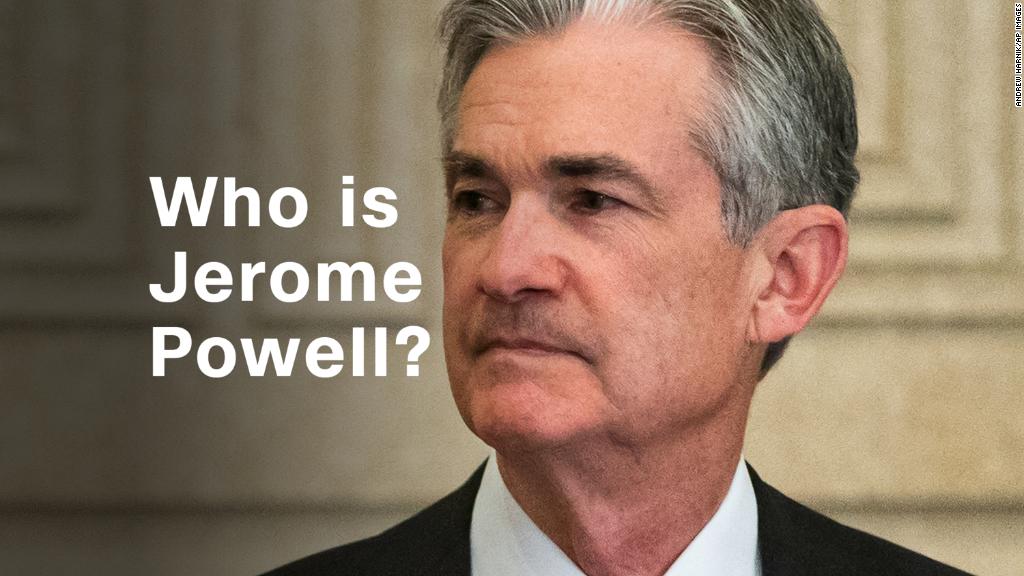
Talk about a baptism of fire. Jerome Powell's first day as new Federal Reserve chairman saw the biggest stock market meltdown in over six years.
He's not the first Fed chair to be tested early in his tenure. Just two months into his 19-year stint at the helm, Alan Greenspan's mettle was tried by the 1987 crash that saw the Dow shed more than 22%.
Former Fed Chairman Ben Bernanke was subjected to a much harsher exam halfway through his first term: preventing the collapse of the financial system. Markets gave his successor, Janet Yellen, a much easier time.
Powell, who was sworn in as the 16th chairman of the central bank, takes the role at a critical time as inflation shows signs of accelerating and American wages are finally growing.
Related: This is why the Dow is plunging
The United States is near full employment. And the stock market -- the past week notwithstanding -- has been on a very long upward run.
By most measures that's good news. But it also means Powell's job of keeping the economy humming without sparking a recession will be a difficult one.
"The Fed is in the midst of trying the hardest trick in its book, which is to raise interest rates without causing a recession," said Aaron Klein, a fellow in economics studies and director for the Center for Regulation and Markets at the Brookings Institution.
"That's the middle of the act that Chairman Powell has inherited. It's a tricky play to pull off."
Related: How the Dow fell 800 points in 10 minutes
Fears that higher inflation might force the Fed to raise rates faster than expected helped send stocks plunging on Monday. The Dow closed down more than 1,100 points -- a 4.6% decline.
Usually when interest rates are low they have little effect on the stock market. But when rates begin to rise, investors start to worry that could snuff out economic growth.
Investors have waited patiently for inflation to pick up. The gauge of prices of everything from milk to train tickets has mysteriously stayed low. And it's still not at 2% -- the level the Fed considers healthy for the economy.
But starting last week, investors began to see evidence that the prolonged period of weak inflation could be coming to an end, and bond yields rose to their highest level since January 2014.
"Everyone is shifting from one side of the boat to the other," said Kate Warne, an investment strategist at Edward Jones.
The Fed has signaled it will need to tighten its monetary policy this year, but until now wage and inflation data haven't borne out such forecasts.
Related: A quarter of the Trump rally has been wiped out
Investors are now betting that Powell will raise rates more frequently this year with the first hike expected in March. The Fed has penciled in three rate hikes this year, and two more in 2019.
"There was nothing about this [Fed chair] transition that was not seamless," said Louis Crandall, chief economist at Wrightson ICAP. "What has not been seamless has been the economic data."
Markets now estimate that there is a 24% chance the Fed will lift rates four or times this year. As recently as December, traders betting on the central bank's policy rate had expected less than two rate hikes this year.
"The focus on inflation and slightly stronger economic growth has brought the market into line with the Fed's expectations of short-term interest rate increases," Warne said. "Over the last few days the gap has closed between what the Fed expects in terms of short-term rate hikes in 2018 and what the market expects."
Joseph Quinlan, chief market strategist for Bank of America, said investors are now adjusting to some "new normals" including higher wages for American worker that could hurt corporate earnings later this year.
"The market is struggling to adjust to a faster growth rate environment," Quinlan said. "Wages are finally, finally kicking in."


